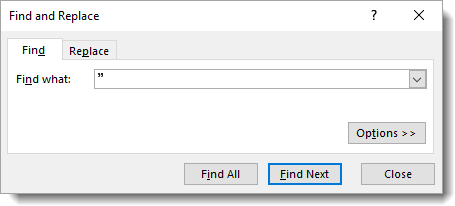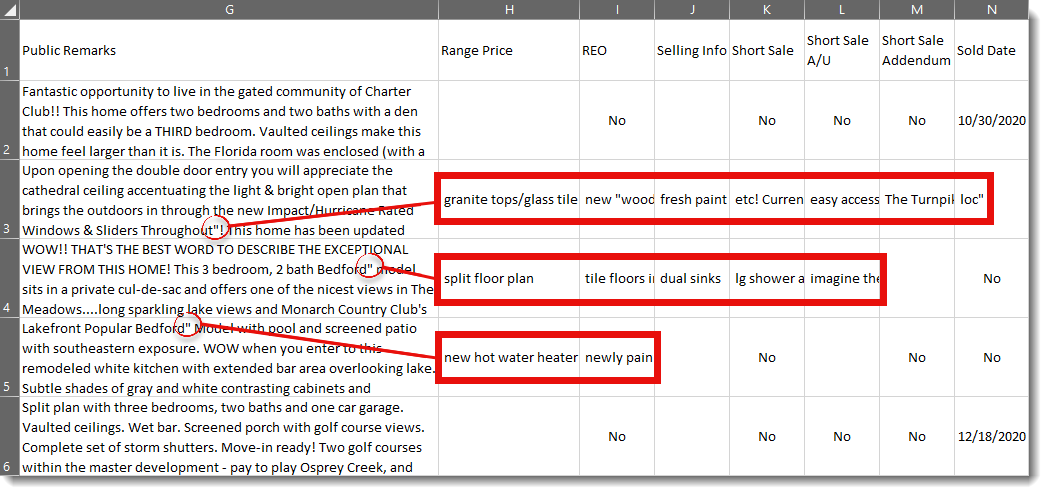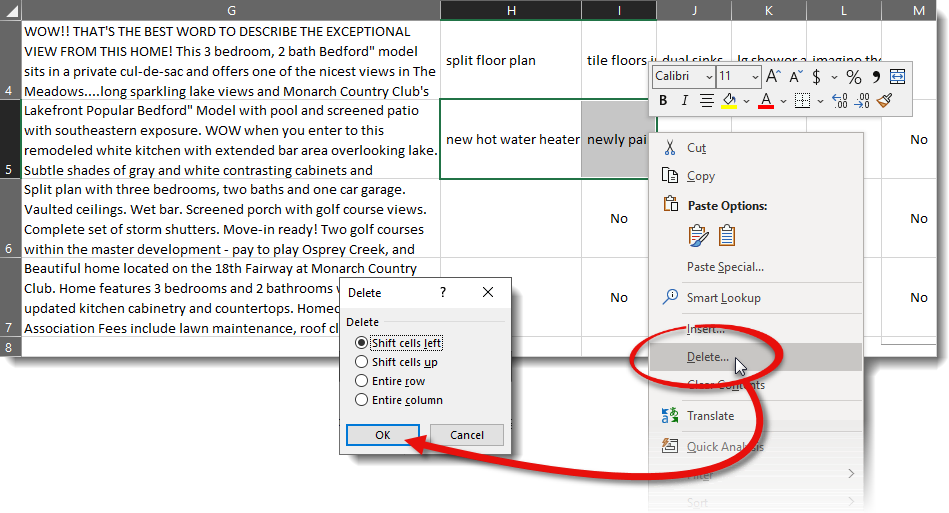How to troubleshoot and repair CSV files that generate an error
This document explains how to troubleshoot and repair CSV files that generate an error.
Document 3302 | Last updated: 10/05/2021 MJY
In rare instances, data exported from an MLS can contain issues in the Comma Separated Value (CSV) file — which causes the data to be misaligned with the appropriate field names, and ultimately causes problems when you try to import your data in QuickSource or Titan Analytics.
The most common cause for this is when one or more quotation marks ( " ) within the dataset aren't formatted properly. This is often found in fields such as Realtor Remarks, Public Remarks, or similar fields where comments or notes were manually entered and a quotation mark was entered unintentionally, or quotation marks were used to imply emphasis.
If you're encountering a problem or receiving an error when importing your CSV file, there are two ways you can resolve most issues:
- Option 1: Remove commentary fields from your export template
- Option 2: Manually correct formatting problems in your CSV file
Option 1: Remove commentary fields from your export template
In many cases, the quickest solution is to remove the remarks, comments, notes, and other similar fields from the custom export template you use on your MLS website. Then, export your data again without those fields, and try importing the new CSV file into QuickSource.
Option 2: Manually correct formatting problems in your CSV file
Improperly formatted quotation marks can appear in any field in a CSV file — not just commentary fields. So, if the first option doesn't correct the problem, or you're not sure which fields to remove, the second option is to manually correct the issue(s) in your CSV file:
- Open your CSV file in Excel or a similar spreadsheet program.
- Press Ctrl + F to open the search dialog, and search for a quotation mark ( " ).

- Once you find a cell where a quotation mark appears, review the data that appears in the cell directly to the right to see if the data has been split, and is overflowing into the next column — or multiple, subsequent columns. For example, if a quotation mark was found in cell G5, review the data in cell H5, I5, J5, etc.
You may need to click Find Next a few times before you find a cell that has a formatting problem. Formatting issues are often immediately apparent and stand out against the other cells in that column.
- Once you identify a cell that is incorrectly formatted, copy and paste the data from the overflow cells back to the original cell (if necessary). Then, click and drag to highlight, or hold down the Ctrl key on your keyboard and click to select each of the offending overflow cells.
- Right‑click one of the selected cells and choose Delete. Then, select Shift cells left, and click OK.
- Repeat steps 2‑5 to correct each cell where you find a formatting problem. When you're finished, save your changes, and try importing your CSV file again in QuickSource or Titan Analytics.

